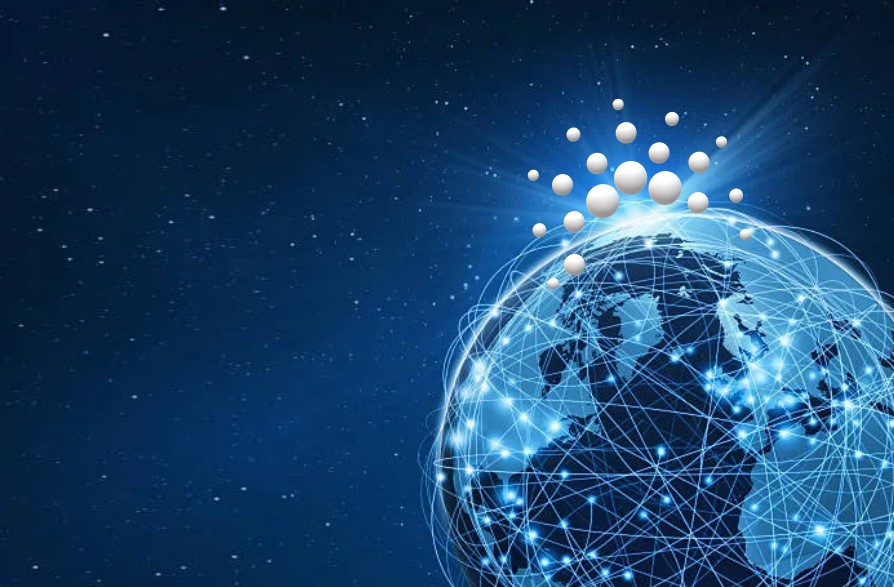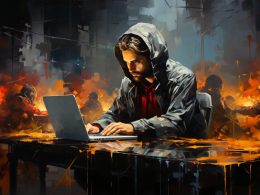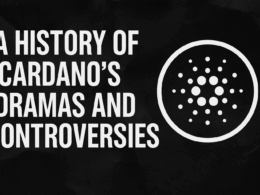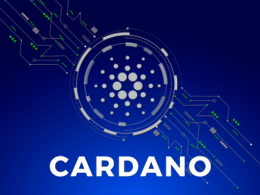Recently, I read a book with a novel, and somewhat daring, idea titled ‘The Network State: How to Start a New Country’ by Balaji Srinivasan, and I wondered if Cardano could take this idea forward. In fact, I know of a project called Logos that is on that path: ‘Why Build a Network State?: An Introduction’.
The author of the book is Balaji Srinivasan, an American entrepreneur, investor, and author known for his involvement in several technology companies and crypto protocols. He was a co-founder of Counsyl, a genetic testing company, CTO of Coinbase, and general partner at Andreessen Horowitz.
The idea he puts forward in his book presents the construction of new prosperous countries and communities, in which talent and wealth can flow freely, emphasizing sovereignty, governance and personal freedoms.
The book delves into the use of technology to establish new cities or countries, presenting the idea of the Network State as a successor to the Nation State.
In this short article I do not intend to make an exhaustive analysis of the proposal of this book, but simply to present the idea. It would require another book of 300 pages, or rather, and to carry the same language of the idea analyzed, of several MB instead of a few KB.
I believe that the Network State is not simply an alternative form of government, but is a model for creating technocratic governments, perhaps much scarier, that are completely free and less power-constrained than existing governments.
The author presents the Network State as an online community, highly focused on collective action to finance territories around the world, seeking diplomatic recognition of pre-existing States.
A Network State is a social network with innovation based on morality, with the capacity for collective action and with a level of civility. Its consensual government is limited by a smart social contract, which manages funds in cryptocurrencies, seeking to finance physical territories. With on-chain census registration, to demonstrate a population large enough to obtain diplomatic recognition.
The Nation State Vs The Network State
A Nation State is based on physical territories and the traditional model of a single Nation (the people) governed by an administrative entity (the State). The modern Nation State system operates on the premise that territories are occupied, and the physical map of the world is fully known and subdivided, even though land disputes constantly exist.
The Network State concept represents a new form of social organization that leverages technology to create highly aligned online communities, capable of undertaking collective and territorial crowdfunding actions to establish a virtual State.
Unlike traditional Nation States, which are based on physical territories, a network State focuses on the alignment of people within a social network. It involves a recognized leader, an integrated cryptocurrency, a clear purpose, a sense of national consciousness, and a plan to acquire territory through crowdfunding.
Why Would It Change The Status Quo Now?
After almost 400 years of the Westphalian Nation State, the author thinks the time is right for change.
After the Peace of Westphalia in 1648, which ended the Thirty Years’ War, it was established as a principle that each State has exclusive sovereignty over its territory and internal affairs, without interference from external powers.
The Westphalian system laid the foundations of the modern state system, emphasizing the independence and equality of states in international relations.
To propose change, one must understand: What are the contemporary catalysts, the technological and political advances that promise to alter centuries of practice? And what might a Network State look like?
How To Create A New Country
The book exposes seven ways in which countries are created, and divides them into conventional ones, which are developed through elections, revolutions and wars, or unconventional ones, such as micronations (an eccentric plants a flag on a platform on the high seas or in a disputed land and declares himself king of nothing), Seasteading (cruise ships that navigate international waters, constituted as floating nations), space (colonizing other planets, you will meet SpaceX, a company owned by Elon Musk, which among its goals, seeks create a new State on Mars) and finally, Network States.
The book highlights how Bitcoin demonstrated that it could not be easily counterfeited or hacked, the shared belief of the millions of cryptocurrency holders around the world was enough, from a value of zero to a market capitalization of billions, and from there to be listed on all Bloomberg exchanges and terminals. This type of social traction paved the way for more numerical traction, and a virtuous circle ensued.
Could a startup company follow a similar path? According to the author, yes. A cryptographically auditable census could demonstrate that a growing emerging society has between 1 and 10 million engaged digital citizens, large reserves of cryptocurrency, years of continuous existence, and certain tracts of land.
According to Srinivasan, that numerical traction could be used to achieve the social traction of diplomatic recognition.
Many countries are small. A new state with a population of 1-10M would be comparable to many existing states. This is because of the 193 recognized by the UN, 20% have less than 1 million inhabitants and 55% less than 10 million. This includes many countries considered legitimate, such as Luxembourg (615 thousand), Cyprus (1.2 million), Estonia (1.3 million), New Zealand (4.7 million), Ireland (4.8 million) and Singapore ( 5.8 million).
It posits that history is crucial in determining legality, morality, and governance. A founder of a newly created company can do without history, but a president of an emerging company cannot, because a new society implies a moral, social and legal innovation with respect to the old one, and that requires knowledge of history.
New countries begin with new stories. The narratives challenge traditional views of history, emphasizing the need for new stories that explore history, and revise it, as an alternative path for the development of society.
Balaji Srinivasan presents the idea of’ ‘One Commandment’ which serves as a fundamental principle, whereby emerging societies should focus on a moral premise to avoid mission drift and complexity. By having a clear and singular moral focus, these societies can attract like-minded people and build a community around this shared belief.
Could Cardano Develop A Network State?
In order to answer this question, the analysis could be divided into two parts, the philosophy and the technological infrastructure.
As for philosophy, we should understand its co-founder and leader, Charles Hoskinson, to see where he intends to take the development of the ecosystem.
Although it is a permissionless blockchain, that is, anyone can use the L1 infrastructure to set up their DApps, Hoskinson makes it very clear the direction he is managing for Cardano: being friendly to governments.
The whitepaper, Why Cardano says: “Find a healthy middle ground for regulators to interact with commerce without compromising some core principles inherited from Bitcoin”.
This video summarizes its creator’s approach: How Do You Explain The Mission Of Cardano?
In May 2018, Hoskinson signed a Memorandum of Understanding (MOU) with the government of Ethiopia to participate in training blockchain developers in the agritech industry.
Then, in April 2021, IOG, the developer of Cardano, announced a new partnership with the Ethiopian Government to implement a national blockchain-based student and teacher identification system to digitally verify grades, remotely monitor school performance, and boost education and employment across the country.
At the Cardano Summit 2021, proposals were raised on models to develop a Cardano Nation. Video: Exploring models for creating a Cardano ‘nation’
In June 2022, Charles Hoskinson appeared before the U.S. Court. House Subcommittee on Commodity Exchanges, Energy and Credit of the US House of Representatives, advocating for decentralization and balanced regulation. He highlighted the significant growth and opportunities presented by blockchain technology. Additionally, Hoskinson expressed his willingness to offer real-world use cases, and thoughts on the potential to assist in the legislative process. You can read the document.
In September 2022 Cardano Foundation Partners with Georgian National Wine Agency to create a solution on the Cardano blockchain to ensure the quality and authenticity of Georgian wine.
These data make clear the willingness of the Cardano leader to interact with States, this being a key characteristic to be able to develop the blockchain as a Network State.
Regarding the second part of the analysis, Cardano has the basic technological infrastructure to be able to address the challenge.
The first generation of blockchains (such as Bitcoin) offer decentralized ledgers for the secure transfer of cryptocurrencies. However, these blockchains did not provide a functional environment for the settlement of complex transactions and the development of decentralized applications (DApps).
As blockchain technology matured, the second generation (such as Ethereum) provided improved solutions for writing and executing smart contracts, developing applications, and creating different types of tokens.
Cardano is conceived as the third generation blockchain, as it combines the properties of previous generations and evolves with governance, and a better programmability environment to meet all the needs that arise from users.
In this way, various applications can be developed on Cardano’s L1, even creating sidechains, such as independent blockchains that connect to the main one (L1).
DApps to manage decentralized digital identity, for decentralized finance (DeFi), for education, and communications, are essential.
Of course, the governance structure cannot be missing, which is key in the Network State, and that Cardano is currently carrying out in its Voltaire Era.
The creation of DAOs as decision structures are crucial. I leave you an article on this topic at the end (1).
Conclusion
The idea proposed in the book that I discussed in this article seems distant, but it should not necessarily occur in the way it is presented, at least in the near future, since it could occur in a less ambitious way in a micro-context.
Perhaps the formation of Networks could manage trade and government relations within the framework of the current Nation State, without replacing them, but occupying a place in which citizens had certain norms of coexistence, without contradicting the current ones.
Who knows? Technology shapes societies, like the Internet did in this century, and by the way, blockchain is a technology that promises great possibilities to evolve the world.
Anyway, I think if the government is the problem, don’t speed it up or automate it. If you think the government is not the problem, then why dismantle them?
(1)Decentralized Autonomous Organization (DAO): The Brief History, Challenges, and Lessons Learned










